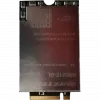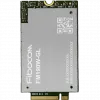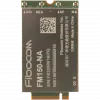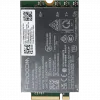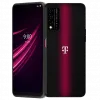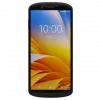5G is generally seen as the fifth generation cellular network technology that provide broadband access. The industry association 3GPP defines any system using "5G NR" (5G New Radio) software as "5G", a definition that came into general use by late 2018. Others may reserve the term for systems that meet the requirements of the ITU IMT-2020, which represents more nations. 3GPP will submit their 5G NR to the ITU. It follows 2G, 3G and 4G and their respective associated technologies (such as GSM, UMTS, LTE, LTE Advanced Pro, etc.).
The first fairly substantial deployments were in April 2019. In South Korea, SK Telecom claimed 38,000 base stations, KT Corporation 30,000 and LG U Plus 18,000; of which 85% are in six major cities. They are using 3.5 GHz (sub-6) spectrum and tested speeds were from 193 to 430 Mbit/s down. 260,000 signed up in the first month and the goal is 10% of phones on 5G by the end of 2019.
Verizon opened service on a very limited number of base stations in the US cities of Chicago and Minneapolis using 400 MHz of 28 GHz millimeter wave spectrum. Download speeds in Chicago were from 80 to 900 Mbps. Upload speeds were from 12 to 57 Mbit/s. Ping was 25 milliseconds.
Five companies sell 5G radio hardware and 5G systems for carriers: Huawei, ZTE, Nokia, Samsung, and Ericsson.
5G networks are digital cellular networks, in which the service area covered by providers is divided into a mosaic of small geographical areas called cells. Analog signals representing sounds and images are digitized in the phone, converted by an analog to digital converter and transmitted as a stream of bits. All the 5G wireless devices in a cell communicate by radio waves with a local antenna array and low power automated transceiver (transmitter and receiver) in the cell, over frequency channels assigned by the transceiver from a common pool of frequencies, which are reused in geographically separated cells. The local antennas are connected with the telephone network and the Internet by a high bandwidth optical fiber or wireless backhaul connection. Like existing cellphones, when a user crosses from one cell to another, their mobile device is automatically "handed off" seamlessly to the antenna in the new cell.
Millimeter waves have shorter range than microwaves, therefore the cells are limited to smaller size; The waves also have trouble passing through building walls. Millimeter wave antennas are smaller than the large antennas used in previous cellular networks. They are only a few inches (several centimeters) long. Another technique used for increasing the data rate is massive MIMO (multiple-input multiple-output).Each cell will have multiple antennas communicating with the wireless device, received by multiple antennas in the device, thus multiple bitstreams of data will be transmitted simultaneously, in parallel. In a technique called beamforming the base station computer will continuously calculate the best route for radio waves to reach each wireless device, and will organize multiple antennas to work together as phased arrays to create beams of millimeter waves to reach the device.
The new 5G wireless devices also have 4G LTE capability, as the new networks use 4G for initially establishing the connection with the cell, as well as in locations where 5G access is not available.
5G can support up to a million devices per square kilometer, while 4G supports only 4000 devices per square kilometer.
5G NR speed in sub-6 GHz bands can be slightly higher than the 4G with a similar amount of spectrum and antennas, though some 3GPP 5G networks will be slower than some advanced 4G networks, such as T-Mobile's LTE/LAA network, which achieves 500+ Mbit/s in Manhattan. The 5G specification allows LAA (License Assisted Access) as well but LAA in 5G has not yet been demonstrated. Adding LAA to an existing 4G configuration can add hundreds of megabits per second to the speed, but this is an extension of 4G, not a new part of the 5G standard.
Speeds in the less common millimetre wave spectrum can be substantially higher.
Latency
In 5G, the "air latency" target for is 1-4 millisecond, although the equipment shipping in 2019 has tested air latency of 8-12 milliseconds.The latency to the server must be added to the "air latency." Verizon reports the latency on its 5G early deployment is 30 ms.
5G NR
Main article: 5G NR
5G NR (New Radio) is a new air interface developed for the 5G network. It is supposed to be the global standard for the air interface of 3GPP 5G networks.
Pre-standard implementations
- 5GTF: The 5G network implemented by American carrier Verizon for Fixed Wireless Access in late 2010s uses a pre-standard specification known as 5GTF (Verizon 5G Technical Forum). The 5G service provided to customers in this standard is incompatible with 5G NR. There are plans to upgrade 5GTF to 5G NR "Once it meets our strict specifications for our customers," according to Verizon.
- 5G-SIG: Pre-standard specification of 5G developed by KT Corporation. Deployed at Pyeongchang 2018 Winter Olympics.
IoT
3GPP is going to submit evolution of NB-IoT and eMTC(LTE-M) as the 5G technology for the LPWA (Low Power Wide Area) use case.
